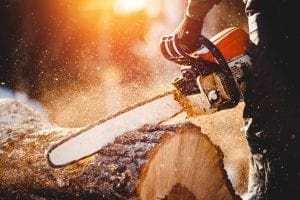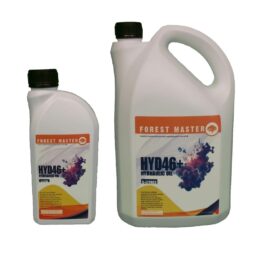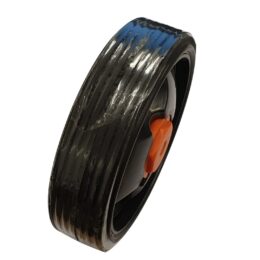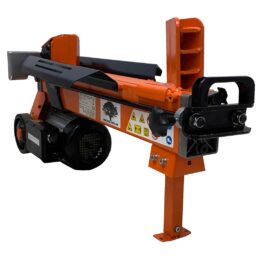Last Updated on January 11, 2022 by Forest Master
Cutting Firewood
Electric and Petrol log splitters are a game-changing gift when it comes to splitting wood logs. For those who love cutting firewood the old-fashioned way, with a bit of elbow grease and a sharp blade, there are manual splitters available for you to go wild with. But not all of us can spend an afternoon slugging away at hardwoods for fuel for your log burner.
That’s why power tools were invented, and depending on the type of wood you’re planning on splitting and how often you’ll be using it, there are a whole range of log splitters available for you to take the manual work out of it and fill a log bag within an hour.
While splitting a correctly sized log is a walk in the park, there are quite a few steps involved beforehand that people rarely think about that are needed to get that nicely cut log.
This blog post will take you through the processes needed from start to finish to get that perfect wedge of log for your splitter. Read on!
Timber! (Tree Felling)

Unless you’re lucky enough to come across a tree that’s fallen naturally, chances are you’re going to have to fell your own tree in order to get some wood, to create logs.
This shouldn’t be undertaken unless you’re an expert or accompanied by one as this is obviously quite dangerous and if you’re not careful you might end up flat.
Cut a notch about waist height into the tree you’re looking to fell with a chainsaw, and then use something like a tree pusher in order to guide the tree to fall in the direction you want it to.
Just place the top of the tree jack into the notch and wedge it against the ground, then crank it so it’s putting a firm pressure onto the tree. You are not trying to lever the tree down with the tree jack, it is a piece of safety equipment.
Cutting Your Logs To The Correct Length
You’ve got your tree down, but now you need to cut it into log sized lengths that will fit into your log splitter. The best sized logs for the majority of splitters are placed between 14 to 18 inches, and logs this size will also work nicely for burning in your log stove.
There are a few different tips and tricks for quickly measuring out your log size, but the fool-proof method of a tape measure and chalk is probably the best way. Mark out with a line of chalk all the way up the length of your tree with chalk, and then you know exactly where to cut.
There are gizmo’s out there which are essentially a wheel you run along the length of the tree and it will mark out every x amount of inches with a giant splodge of paint, but we really wouldn’t recommend these. Who wants to burn logs with big splodges of paint on?
Prop Up Your Log

Don’t dull your chainsaw blade by dipping it into the dirt every time you cut your log, and definitely don’t cut your log with it propped up on something like another log. While this may be fine for the first couple of cuts, as your giant log gets shorter there is an extremely high chance that it will twist from under the chainsaw and is very dangerous. Do not take the risk.
Use something like a log jack, or bulk log saw to cut your logs with guaranteed safety. There really is no price you can put on safety, and whilst hindsight may be 2020, sawing your leg off doesn’t sound fun to me.
Split Your Logs
There is a certain big brand of log splitters that repeatedly tell people to split logs once they have aged (seasoned) as it will make it easier. This big brand is wrong.
Seasoning your logs will remove a large amount of moisture from your log, not only making it akin to concrete if you’re splitting a particularly dense hardwood but if you’re trying to split seasoned hardwood, it absorbs pressure before splitting suddenly. This will both increase the chance of damage to your splitter but increase the chance of injury to yourself.
And as I’m sure you’re aware, split logs will season considerably quicker. More surface area -> quicker evaporation. It’s simple science.
If you weren’t aware, you can also use your Forest Master log splitter to split kindling. Take a look at our blog post guide on how to split wood kindling with your log splitter to find out how easy and convenient the process is.
Stick Your Wood In a Log Store

All that’s left to do now is wait for your logs to season before you can use them in your log burner. The best way to do this while preventing mould, damp and infestations is in a log store. If you’re looking for a good one, we have another blog post about our favourites here.
Stack it high, leave your logs to season and once the moisture content is below that 15% threshold, you’re good to use them in your log burner.
Enjoy this blog post? Check out some of our others.








Danke für die wichtigen Informationen bezüglich Brennholz. Ich bin letztes Jahr in ein Haus mit zwei Öfen gezogen und habe noch nicht so viel Ahnung von Brennholz. Ich werde mir zunächst mal ein Holzlager zulegen. Danke für die hilfreichen Tipps.